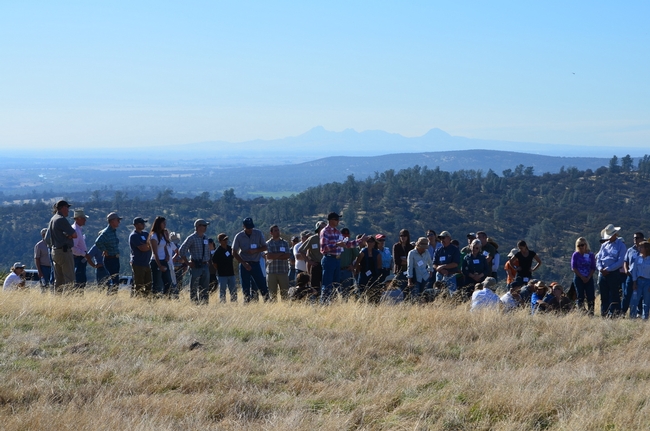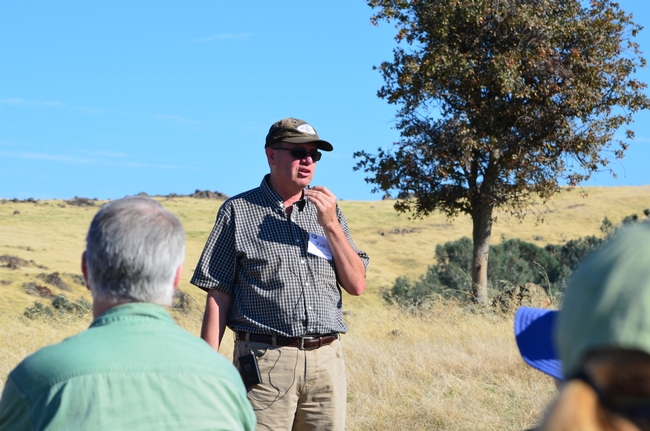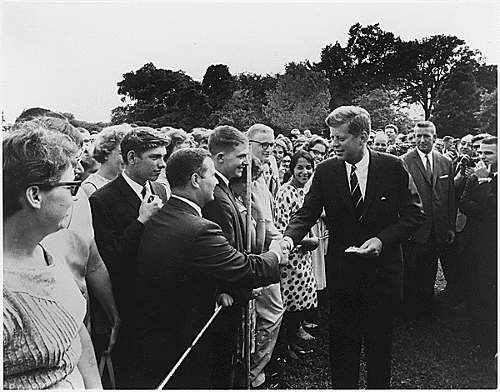Posts Tagged: Morgan Doran
Diverse groups work together to enhance ecosystem services

Ecosystem services is a new term I've been hearing. Naturally I wondered, what are these services and is the ecosystem serving me? Ecosystem services are benefits we receive from the environment, such as clean water, open space, beautiful scenery, food production, wildlife habitat and diversity of plants and animals.
Not surprisingly, ecosystem services appeal to a broad audience. However, in the past, many people advocated for a single favored service and would fight with those who were partial to a different service. Now there is a strong trend toward partnerships.
“There’s been sea change on the topic of livestock management and rangeland ecosystem services,” said Ken Tate, UC Cooperative Extension watershed specialist based at UC Davis.
In a scenario 20 years ago, many ranchers would have focused solely on livestock production and ranch profit, while some environmental groups would have voiced concerns solely about wildlife habitat, and a government regulatory agency may have considered water quality the most important service. All parties have begun to recognize the connections among these important services and the need to work together to enhance all of them.
“If a ranch is not economically viable, then there is risk that land could become a shopping mall or some other development,” Tate explained. “A working ranch provides more ecosystem services than developments such as malls or suburban sprawl.”
A UC study published in the current issue of California Agriculture journal found that rangeland owners valued their land for its natural amenities as well as a financial investment.
Recently more than 120 people representing new and long-time ranchers, conservation groups, federal and state natural resources agencies, UC scientists and others gathered for the “Managing Rangeland for Ecosystem Services Workshop and Field Day” to discuss their common goals.
“Interest in this event reflects the growing interest in ecosystem services in a growing number of people,” said Tate, who organized the Oct. 18 event at UC’s Sierra Foothill Research and Extension Center, located 60 miles northeast of Sacramento. “Some people drove four or five hours to attend.”
At the workshop, Tate introduced the Prescribed Grazing for Ecosystem Service Project.

Despite their different backgrounds and ecosystem service priorities, there was no adversarial discussion among the attendees, observed participant Morgan Doran, UC Cooperative Extension livestock & natural resources advisor for Solano County.
“Everyone seemed to be in agreement that livestock are a useful tool in sustaining a healthy rangeland ecosystem,” Doran said. “And all seemed to acknowledge a need to better understand the balance of provisioning goods and services from rangeland systems.”
“We used to talk about one service at a time,” Tate said. “Now we talk about tradeoffs and synergies involved in managing for many services simultaneously. Optimizing water quality might take away from profitability. Talking about tradeoffs used to be confrontational. Now if we can understand the costs of these tradeoffs, there may be an individual or organization willing to pay for that difference. Basically, purchasing ecosystem services.”
Tate credits the workshop cosponsor California Rangeland Conservation Coalition for fostering the collaborative attitude. UC is among the more than 100 agricultural organizations, environmental interest groups, and state and federal agencies that have signed the California Rangeland Resolution, which recognizes that rangelands and the diversity of species they support largely exist due to grazing and other stewardship practices of the ranchers who own and manage the land.
“New people have come to the table who might not have gotten involved in a negative process,” Tate said. “The coalition is a positive approach to the conservation of rangelands, that makes it attractive to people. They are working together to achieve common goals.”
Tate is excited about Cooperative Extension’s role of trying to identify the information needs and conducting the research to supply this information.
Leslie Roche, a UC Davis postdoctoral researcher and presenter, remarked on the interest and enthusiasm in collaborative research and management demonstrated among the diverse group of attendees.
“Everyone is genuinely motivated to work together in bridging the gap between research and management communities on this topic, and that is really exciting," Roche said.
A list of speakers and their presentations for the workshop and field day are posted on the California Rangeland Watershed Laboratory website.
Although the term ecosystem service was unfamiliar to me, it’s not new. In 2000, United Nations Secretary-General Kofi Annan called for the Millennium Ecosystem Assessment. The objective of the project was, “to assess the consequences of ecosystem change for human well-being and the scientific basis for action needed to enhance the conservation and sustainable use of those systems and their contribution to human well-being.”
Many UC academics heeded Kennedy's call to 'serve the cause of peace'
When President John F. Kennedy created the Peace Corps in 1961, he not only sent thousands of Americans to serve the cause of peace in the developing world, he set them on a course of service that continued when they returned to the U.S. A significant number came to work for UC Cooperative Extension.
One of them is Jim Grieshop, a now-retired UCCE community education development specialist, who was profiled in an article in the February issue of Alaska Airlines Magazine marking the Peace Corps' 50th anniversary.
Acceptance into the Peace Corps helped Grieshop achieve his personal goal of living and working in Latin America, the article said. In May 1964, he arrived in Cayambe, Ecuador, to spend two years as a science teacher. He quickly learned to be flexible.
"The science teacher in the village didn't really want me to teach science," Grieshop was quoted in the story. "So I taught English in primary schools and the high school . . . . We put on a rodeo, we did some summer programs - I was kind of making it up as I went along."
Here are some of the other UCCE academics, past and present, who served in the Peace Corps:
Monica Cooper, viticulture farm advisor in Napa County, volunteered in an agrarian community in Panama.
Jeff Dahlberg, director of the UC Kearney Agriculture Research and Extension Center, served for three years in the Republic of Niger.
Chris Dewees, retired specialist in Cooperative Extension marine fisheries, volunteered in Chile.
Morgan Doran, livestock and natural resources farm advisor in Solano County, volunteered in Ecuador.
Ben Faber, Ventura County farm advisor, served in Togo, Africa.
Mark Gaskell, small farm advisor in San Luis Obispo County, served in Venezuela.
Juan Guerrero, retired farm advisor emeritus for Riverside and Imperial counties, worked with subsistence farmers and large-scale commercial farmers in Paraguay and Peru.
Glenda Humiston, vice president, UC Agriculture and Natural Resources, served in Tunisia, North Africa.
Susan Laughlin, retired regional director, spent three years in Colombia.
David Lewis, watershed management advisor in Marin County, volunteered in Niger.
Mike Marzolla, retired 4-H advisor in Ventura County, coordinated a school and community garden program in Guatemala.
Richard Molinar, retired small-scale farm advisor for Fresno County, served in Honduras.
Jeff Mitchell, cropping systems specialist, UC Kearney Agricultural Research and Extension Center, served in Botswana, Africa.
Rachel Surls, UCCE sustainable food systems advisor in Los Angeles County, served in Honduras.
Jack Williams, the retired Sutter/Yuba county director, worked alongside farmers in Kenya, Africa.
Ken Wilmarth, former 4-H advisor in Stanislaus County, and his wife, Jenny, spent two years in Chavin, Peru.
Have I missed any UCCE Peace Corps volunteers? Please post a comment letting me know.

President Kennedy greets Peace Corps volunteers in 1961. (Photo: Wikimedia Commons.)